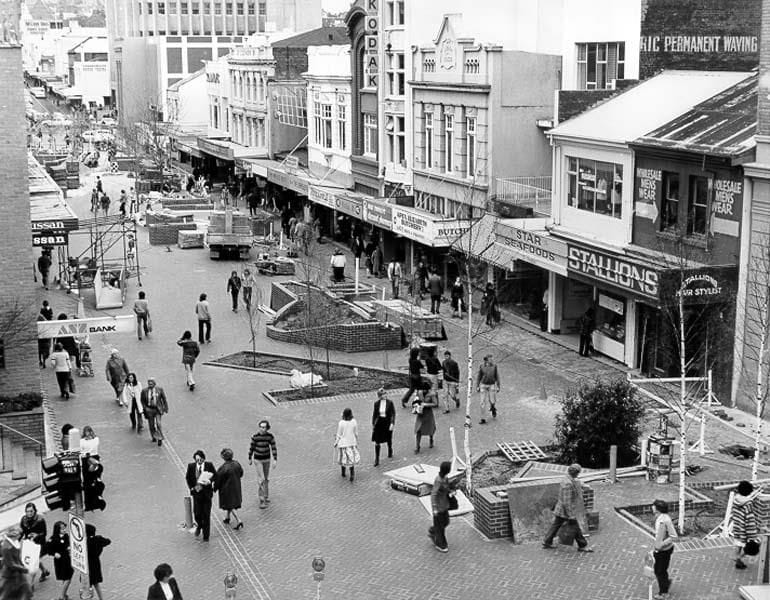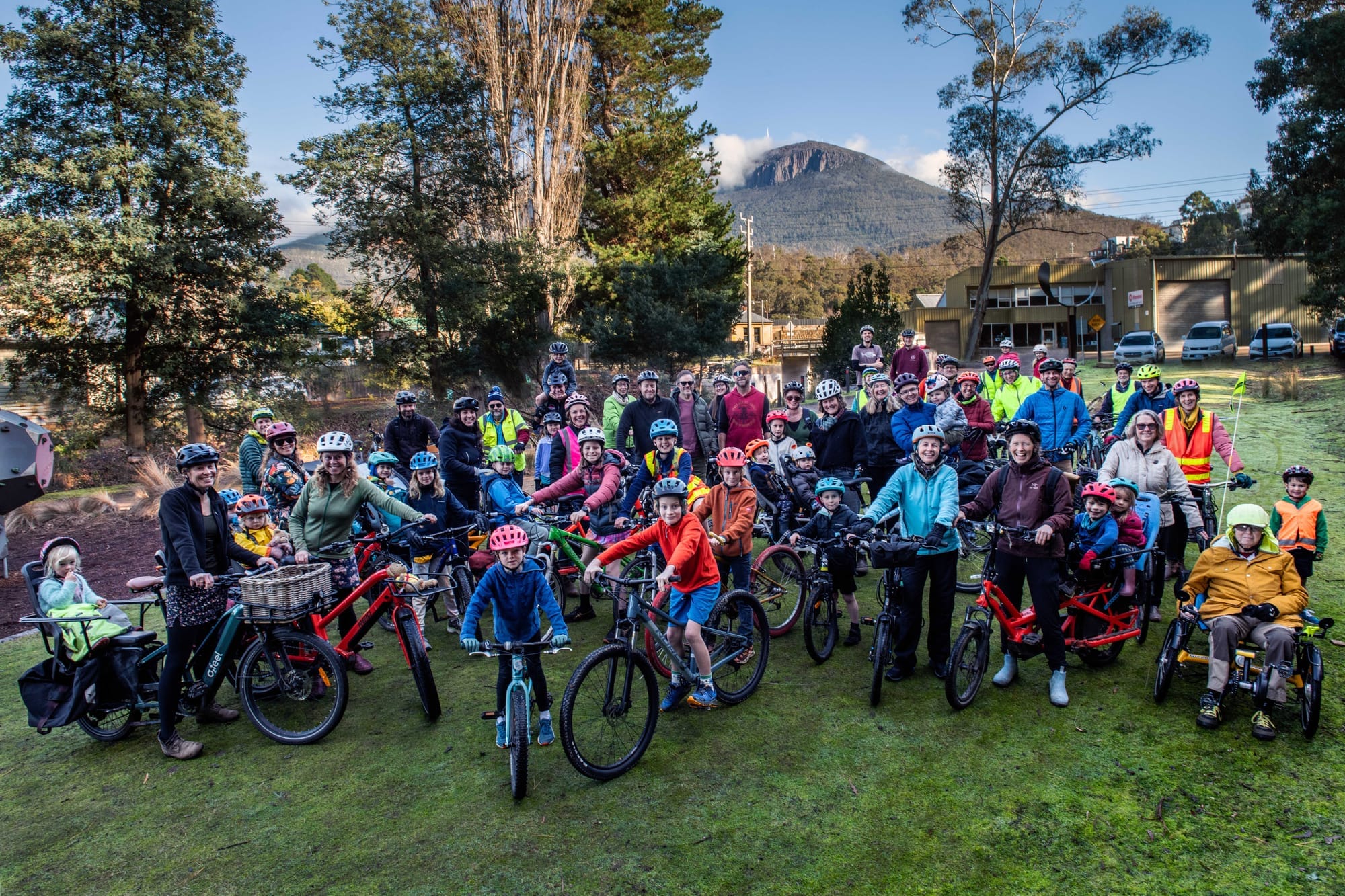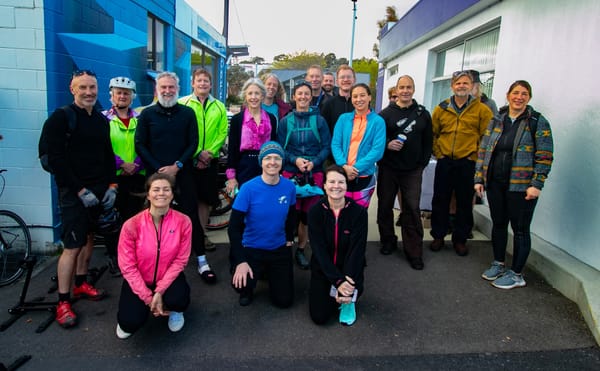Research shows active transport including cycle lanes is good for our health and wellbeing and good for business
Fast forward nearly 50 years and a few local businesses are worried that reducing on-street parking in Collins Street to accommodate a bike lane will be detrimental to their business while ignoring all the evidence that suggests otherwise...

Hobart’s Elizabeth Street Mall took 10 years to materialise. During this delay, Launceston planned and built its city mall and then watched as its southern neighbour argued about the potential impact a city mall may have on transport and business. Coogans, a well-loved Hobart store, was one outspoken proponent against the proposal as they worried blocking streets would impact service delivery vans while a local shoe store thought it was just a plain waste of money (as reported by The Mercury, 1977).
Fast forward nearly 50 years and a few local businesses are worried that reducing on-street parking in Collins Street to accommodate a bike lane will be detrimental to their business while ignoring all the evidence that suggests otherwise. According to Bloomberg CityLab, research undertaken in places like New Zealand, the UK, the USA, Canada, Ireland and even in Australia, all reach a similar conclusion: “replacing on-street parking with a bike lane has little to no impact on local business, and in some cases might even increase business”.
These research findings are somehow unpalatable for the Confederation of Greater Hobart Business, so they pretend they are not relevant to Tasmania, arguing we are different. Travelling around Australia and in other countries, what strikes me is how similar we are. You will be surprised to note that we drive the same cars, have similar road rules and speed limits, roads look the same and we have similar retail and commercial businesses. The main difference is that many mainland cities have embraced active transport through investment in cycle lanes and safe pedestrian access.
By ignoring research, the Confederation by default chooses to deny Tasmanians all the other benefits that we know come from active transport. These benefits range from helping Tasmanians exercise more (we exercise less than those in other states) which facilitates greater physical fitness and healthier populations (Tasmanians suffer a greater propensity for chronic diseases like diabetes and cardiovascular disease), and it helps improve our mental health. These are all factors that lead to a more productive lifestyle and workforce.
Living in South Hobart during the 1990s, the only avenue to the city was Macquarie Street, hence few people braved the footpath or cycled amongst the traffic because it was not a pleasant experience nor safe to do so. Returning to South Hobart in 2018, I was amazed at the number of people who were using the Rivulet Track to get to Hobart, or for those working in the city as a safe place to get lunchtime exercise.

The track is for everyone and now it’s there, everyone uses it. From everyday mums and dads dropping their kids at school on the way to work, the elderly and the young, babies being pushed in prams, tourists taking in the sites, those using mobility scooters, or runners fast and slow. Census data shows that over this 20-year period, the number of people from South Hobart riding to work increased from 54 to 225 (2% to 7% of persons) while those driving fell from 56% to 46%.
Can you picture even more people would take-up active transport and utilise this track if they were assured a safe journey all the way into the city centre, not just left hanging at its fringe? Research shows the biggest barrier to cycling is perceived safety and segregated cycleways are key to feeling safe. Investing in the Rivulet Track has demonstrated this as fact and the time is now, given the increased traffic congestion around Hobart, to extend this cycle path all the way into the city.
For each person who chooses to cycle rather than drive, that is one less car on Macquarie Street, or any other street for that matter. Imagine if the Rivulet Track hadn’t been built, how much more congested Macquarie Street would be if you inserted hundreds of extra cars back onto that road during peak period. This reason alone should be enough for every driver battling the morning traffic on the Southern Outlet to support the Collins Street cycle lane.
For Streets People Love Hobart, all we are asking is that some roads are made safe for all people and for all modes of transport, whether people choose to drive, cycle, scoot, use mobility scooters, run or walk.
It feels like history repeating as our northern neighbours in Latrobe, Devonport, Central Coast, Burnie and Waratah–Wynyard watch on because they planned and built their Coastal Pathway –110 kilometres of cycle paths that safely traverses regions between Latrobe through to Wynard connecting 85,000 people – while Hobart businesses get bogged down debating the merits of removing some (not even half) of the parking spaces to trial 700 metres of cycle path.
Bruce Levett
On behalf of Streets People Love Hobart





